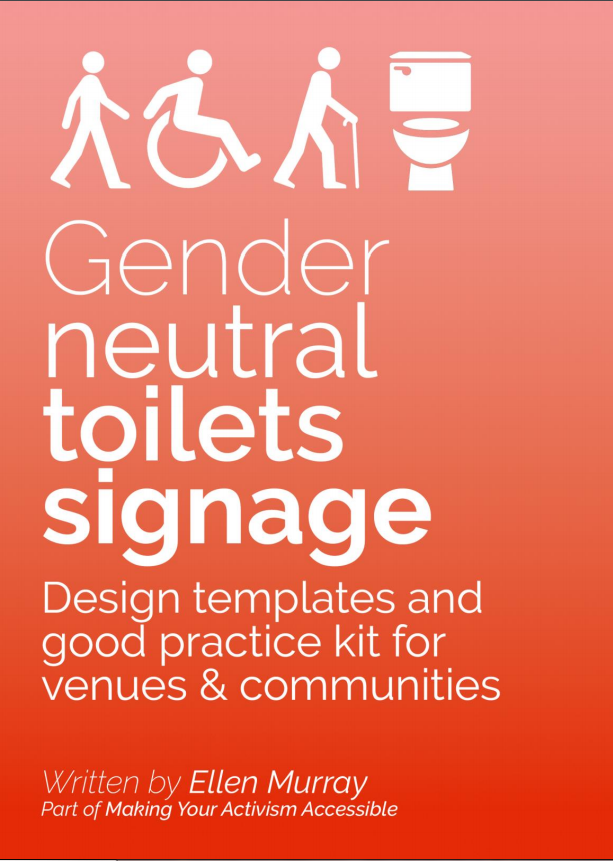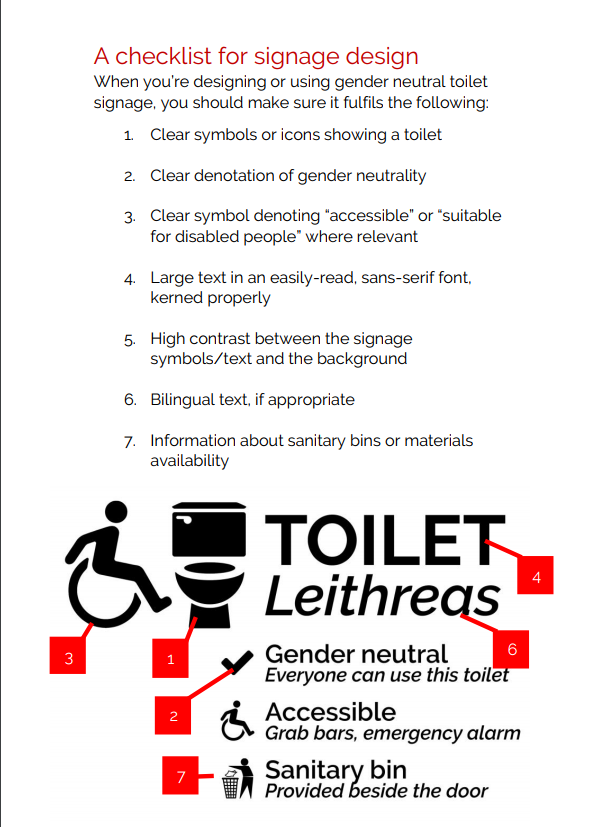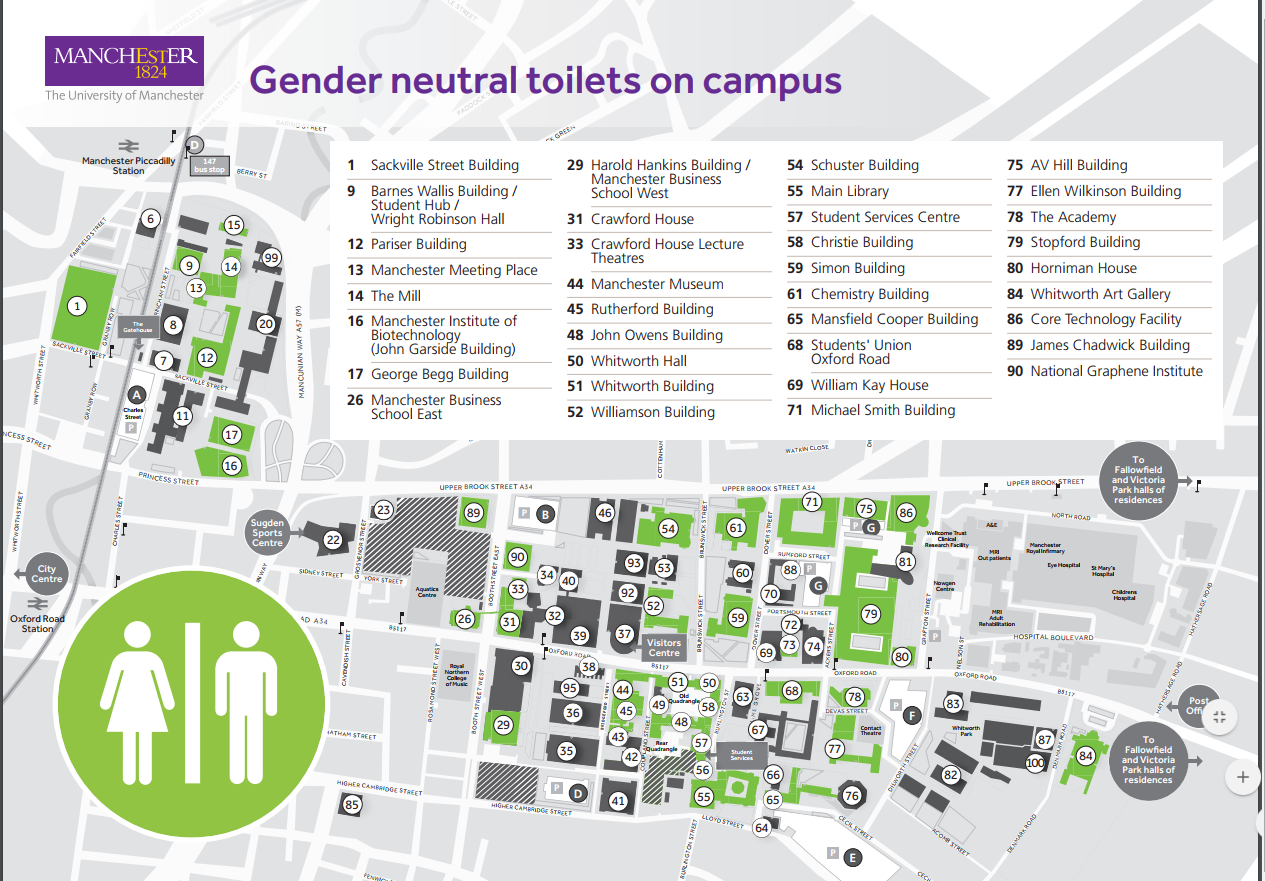Findings and Experiences
Our research suggests that many trans and non-binary people do not feel comfortable or safe in gendered facilities (i.e. facilities for men or for women), as these can be spaces where they face prejudice, hostility and ridicule. These concerns are often related to being visibly trans or gender diverse, and being challenged or threatened by other users of the facilities - and fear associated with the potential for this.
The TransEDU Scotland research also found that there was a general lack of gender-neutral toilet provision across Scottish college and university campuses. As a result, many students and staff would purposefully avoid using the toilet at all whilst at college, university or work. Others would regularly have to make a twenty minute round-trip to the nearest gender-neutral toilet on campus. Often where there was gender-neutral provision, these facilities were also the only accessble facillities; this led to hesitation from non-disabled trans and non-binary people, who were concerned that they were 'taking up space' in facilities intended for and required by disabled people (as discussed in the video above).
Gender-Neutral Facilities
Many trans and non-binary people do not necessarily feel comfortable or safe in single gender facilities for a variety of reasons, as discussed previously. The need for gender-neutral facilities emerged as a significant issue throughout the TransEDU Scotland research, which is also reflected in increasing practice and provision across Scotland and the UK.
The provision of gender-neutral facilities should be developed in addition to gender-specific (i.e. men's and women's) provision. Increasingly, as new premises are built and existing ones refurbished, some insitutions are moving toward single-stall self-contained toilet facilities, offering complete privacy to all users (such 'privacy in design' is highlighted in Ellen Murray's guidance below).
It is vital to ensure that there are a number of gender neutral toilet facilities across your campus, alongside gender-neutral changing facilities in Sports Centres, laboratories, and on professional placements, etc. There are number of important matters to consider when developing this provision, including location, access and appropriate signage.
"There are a few principles that should be adhered to when building new gender-neutral toilets, or changing existing toilets to gender-neutral.
- Facilities should be clearly marked as gender neutral, using appropriate signage
- It is not OK only make half the facilities neutral – for example, you shouldn’t make just the women’s facilities gender neutral
- You should not only make accessible/disabled toilets gender-neutral – these are needed by disabled people
- Sanitary bins and dispensers should be provided in all facilities
- Gender neutral facilities should not require a key to open, with the exception of accessible/disabled facilities using a Radar Key or local equivalent
- Privacy should be centred in design: full-height doors and partitions in cubicles is best
- If building new facilities, limit the number of urinals
- Even in facilities not designated as “accessible/disabled”, you should incorporate accessible design throughout"
(Ellen Murray, 2017, Gender Neutral Toilets Signage: Design templates and good practice kit for venues and communities)


[Images: Front cover and inside view of Ellen Murray, 2017, Gender Neutral Toilets Signage: Design templates and good practice kit for venues and communities]
It is also important to ensure that the gender-neutral facilities are well signposted in order for staff, students and visitors to easily access them. Increasing numbers of institutions and organisations are developing campus maps to denote the location of the gender-neutral facilities. An example of this, from the University of Manchester, can be viewed here.

[Image: Gender Neutral Toilet map from the University of Manchester]
Please note: the information on this page does not constitute legal advice on the provision and usage of toilet facilities. Please consult the appropriate statutory guidance for in-depth specifications and information.